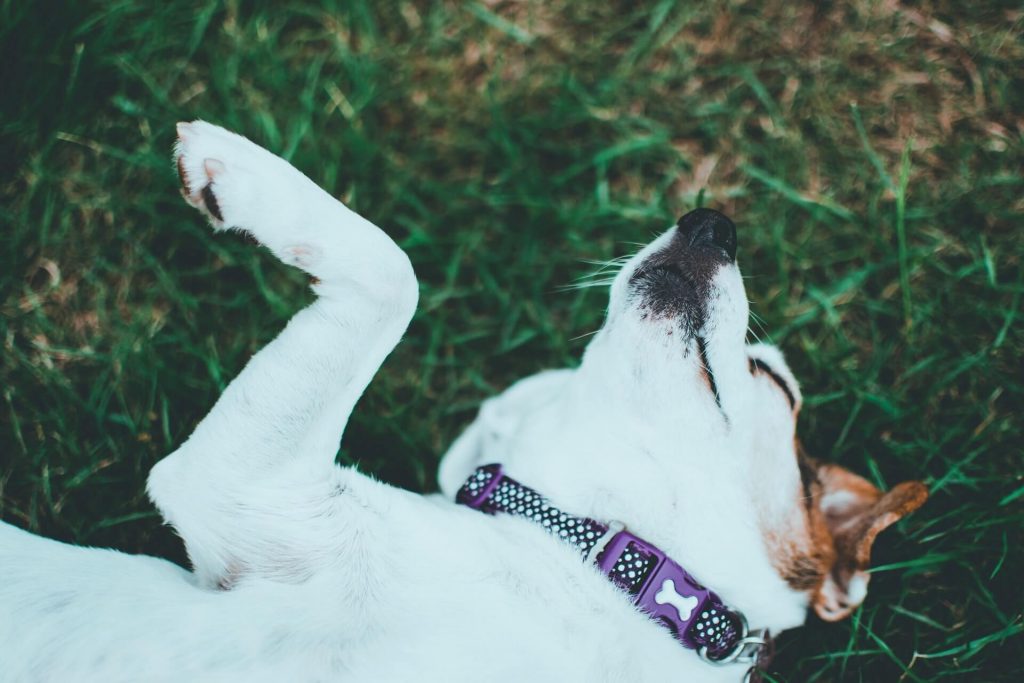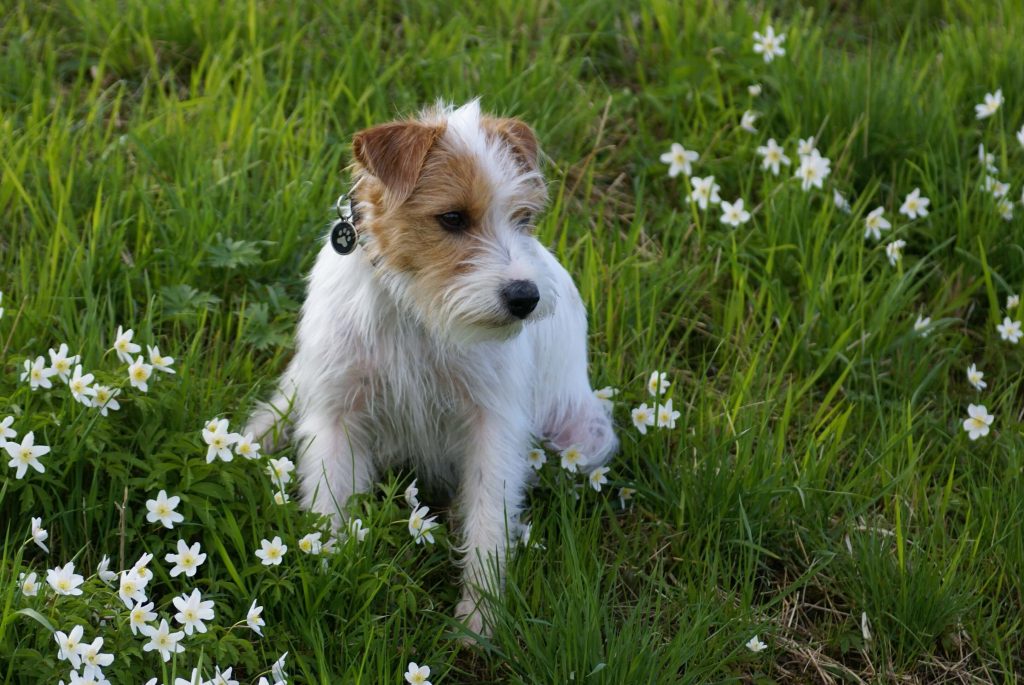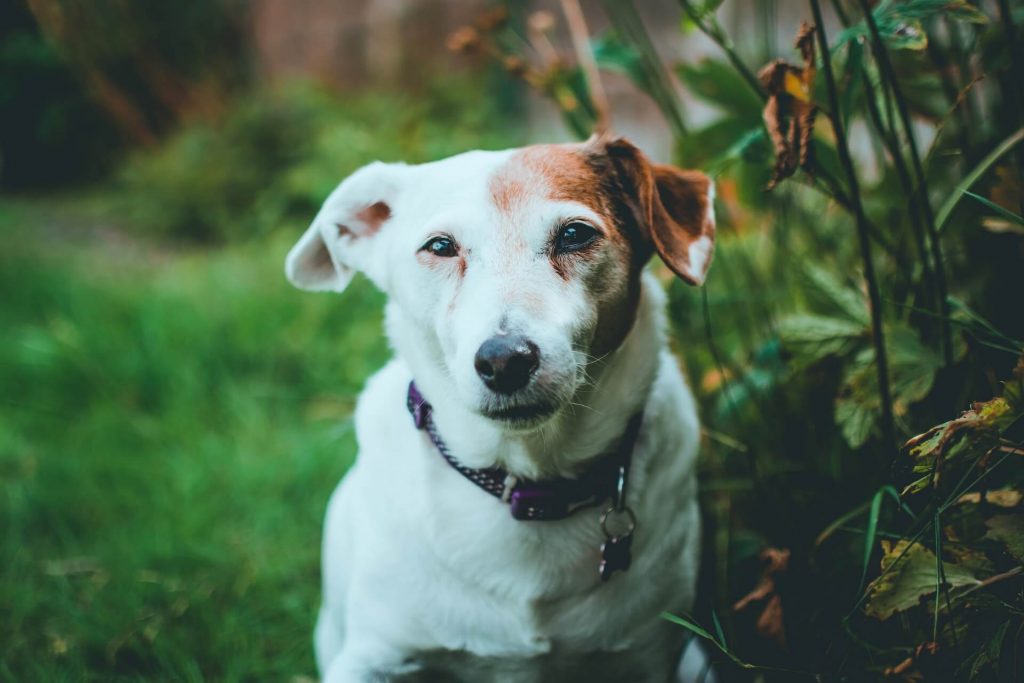The lawn lies in ruins (this is the scenario before laying artificial grass, by the way). In-between the holes and mounds of hastily excavated soil, is the yellow-brown nitrogen-bleached remains of chewed, urine soaked grass. It is a scenario relatable to dog owners all over the world, and it can be disheartening if – like us – there is no desire to get entangled in a tug-of-war between a reckless dog and the beautiful garden.
Sound familiar? Then stick with us. See, our beloved jack russell terrier (ingeniously named ‘Jack’) win our hearts with a butter-wouldn’t-melt look, and five minutes later the grass would resemble a green-brown-yellow twister sheet.
But that naughty behaviour all changed when we applied the ‘PAWS and reflect approach’. In this article, we’re going to show you how little Jack turned a corner, and how things generally got better as a result.
The ‘PAWS and reflect approach’ is a practical and methodological approach to ensure the wellbeing of yourself, any troublesome pooches, and the garden; and like any practical and methodological approaches, it requires correctly identifying the source of the problem, and asking the questions how and why.
So, how is your dog being destructive in the garden? Why is it doing these destructive acts? In order to answer, we need to look at the problems individually; their underlying causes, and even a little into the innate nature of man’s best friend:

Grass-chewing often has dog owners scratching their heads, especially if the dog vomits after doing so. According to this study, up to eighty per cent of dogs eat grass, and almost seventy per cent do so daily. A common explanation for grass-chewing is that it alleviates ‘gassiness’. That is, dogs sometimes deliberately induce vomiting in order to settle the stomach.
This theory has been strongly contested, however, because dogs don’t actually throw up all that much. In fact, only about a quarter of dogs have been reported to eat grass and then throw up.
A simple suggestion may be that dogs eat grass simply because they are omnivorous (meaning they eat plants as well as meat). It is not uncommon for other animals – including wolves and coyotes – to eat plants and fruit, especially if they are having trouble catching their normal prey. Grass is actually, in dog terms, quite a tasty nutritious snack. By eating grass, the dog is essentially getting a dose of fibre (to aid digestion), calcium, potassium, and other minerals.
Another simple suggestion may be that the dog is bored. Fed up with the same dry biscuits, the monotony effect forces the dog to seek more, diverse, foods. As it happens dogs have fairly sensitive sweetness receptors on their pallet, and may crave the “sweetness” of grass.
Other than that, it is a bit of a mystery. No one really fully understands the canine diet: mainly because dogs have been domesticated for so long.
Dogs often dig up the grass in the summer – just when you want to sit outside – and often on bright sunny days, just to annoy their owners (just kidding).
Actually, dogs are thought to dig when they become too hot. The dog is looking for the cooler and wetter dirt underneath, and the grass just happens to be in the way. Once the soil – now exposed – warms up, the dog moves to another place and resumes the destruction.
Dogs, in their playful and inquisitive nature, often sometimes dig for “prizes” such as plant roots, vegetables, even sprinkler systems. Another theory is that digging is an ancient hunting mechanism, a pre-learned behaviour: without even knowing it, your dog could be looking for “prey” – burrowing animals such as rodents below ground. Some breeds of dog are most susceptible to digging than others, our Jack being one of them.
There is no shortage of other theories for digging dogs. These include: kicking up the grass to release pheromones and claim territorial rights; digging as a means to escape the garden and go in search of a mate; and digging as a result of boredom, exercise, anxiety, or distraction.
The real question should be: why does dog urine bleach the grass a nasty yellow? The answer, without getting too scientific, is that dog urine has nitrogen-containing, ammonia-derived molecules that react badly with grass.
Dog urine can also be too acidic if they are eating an improperly; for example, with a high grain diet.
(And while we are on the subject, it is a myth that female dog urine is worse than male urine. It just happens that females tend to squat and deposit all their urine in large concentrations – which can be more damaging, whereas males tend to wander about and empty a little bit at a time.)

Now that we have some understanding of why your dog behaves destructively, it is time to look at the remedy. This, a certain degree, requires us to place ourselves into the dog’s paws for a moment:
Dogs are unique to the animal kingdom in that they have a kinship with humans like no other. Dogs truly are “Man’s best friend” and can be just as sensitive. For example, one study has revealed that dogs can mirror the anxiety and negativity of their owners, and relaxed and friendly dogs can pass on their behavioural traits to humans, helping to reduce stress. There is even some evidence that dogs and owners share similar physical characteristics.
In essence, the moods of dog and owner bounce between one another; one’s happiness can depend on the other. Think of an unhappy dog like an unhappy roommate. No one would allow a co-inhabitant to suffer in silence, so if you suspect the dog is unhappy, then it is time to figure out why.
We have already established that dogs have a natural psychology inclining them to dig up the lawn, chew and vomit, or urinate on the grass – but is there something going on at home that is reinforcing this destructive behaviour?
A common complaint is that dogs often engage in destructive behaviour while the owner is away. This should not be thought of as an opportunistically naughty dog but as a lonely roommate that is probably stressed, anxious, and bored. If your dog must stay in the garden during the day, then try the following:
A bored and inactive dog will have a lot of energy – energy that may precipitate digging and other destructive behaviour. Remember, your dog is a roommate. What is this really telling you?
More than a third of Britons don’t get enough exercise. If your roommate has a lot of stored up energy to release, and if dog’s mirror the characteristics of their owners, then it is time to re-evaluate your exercise-to-life balance, too. Exercising in a gym steals time with your roommate, and leaves the dog alone for longer, leaving it susceptible to anxiety and disease. Take the dog for a walk instead: not only will this save money; it will mean more time spent with your roommate. Even a 30-minute walk has many health benefits, and is much easier to integrate into the daily routine.
As for the dog chewing grass, recall the theory that dogs eat grass as a nutritional substitute. A poor diet also makes a dog’s urine more acidic and therefore more damaging to the grass it urinates on. Again, what is your roommate’s diet telling you? It could be time to open the cupboard and re-evaluate the weekly shop.
Now, we are more conscious of Jack’s dietary requirements – and of ours, too.
This point is not meant to invalidate the previous three steps of the PAWS and reflect approach – it is immensely important to work together with your new ‘roommate’ (if you did not consider the dog as such before), and that includes working out and eating well together.
But if the dog still engages in habitual destruction from time to time, then laying artificial grass is a neat way to solve the problem once and for all. Artificial grass can be installed in as little as two days; is soft to touch and looks healthy and organic. Being naturally synthetic, it prevented Jack from digging into it and, as we have mentioned above, the properties that made digging so inviting for him (“prizes”, cooler soil in summer) disappear; yet it still looks great in our garden.
There are many different types, but the best artificial grass types for dogs (and pets in general) include Newstead artificial grass; artificial grass of this type generally includes hard-wearing dense “piles” (the artificial grass blades), and instant-recovery technology.
Plus, there is an added bonus: no more traipsing of mud into the home. Remember the physical characteristics connection: If the dog is cleaner and therefore more hygienic, then maybe you, the owner will be… you get the idea.

Three percent of dogs exhibit destructive behaviour on a weekly basis, according to one study. This may not sound like a lot, but given there are 8.5 million dogs in the UK, this amounts to over 240,000 regularly misbehaving dogs all over the country!
If more people knew about the PAWS and reflect approach, we are sure this percentage would decrease even further, as owners become more proactive and closer to their newly identified “roommates”.
And as we hope you agree, the PAWS and reflect approach is a much healthier, better technique than simply scaring your dog into obedience. We have read some pretty nasty suggestions online, including burying balloons or even chicken wire in the grass to frighten or make your dog uncomfortable. With the PAWS and reflect approach, everyone is healthier, happier, and better off. So get laying artificial grass, and go for it!
—
Complete the final step to the PAWS and reflect approach and browse our catalogue of artificial grass products now or click here and contact us personally for more information.